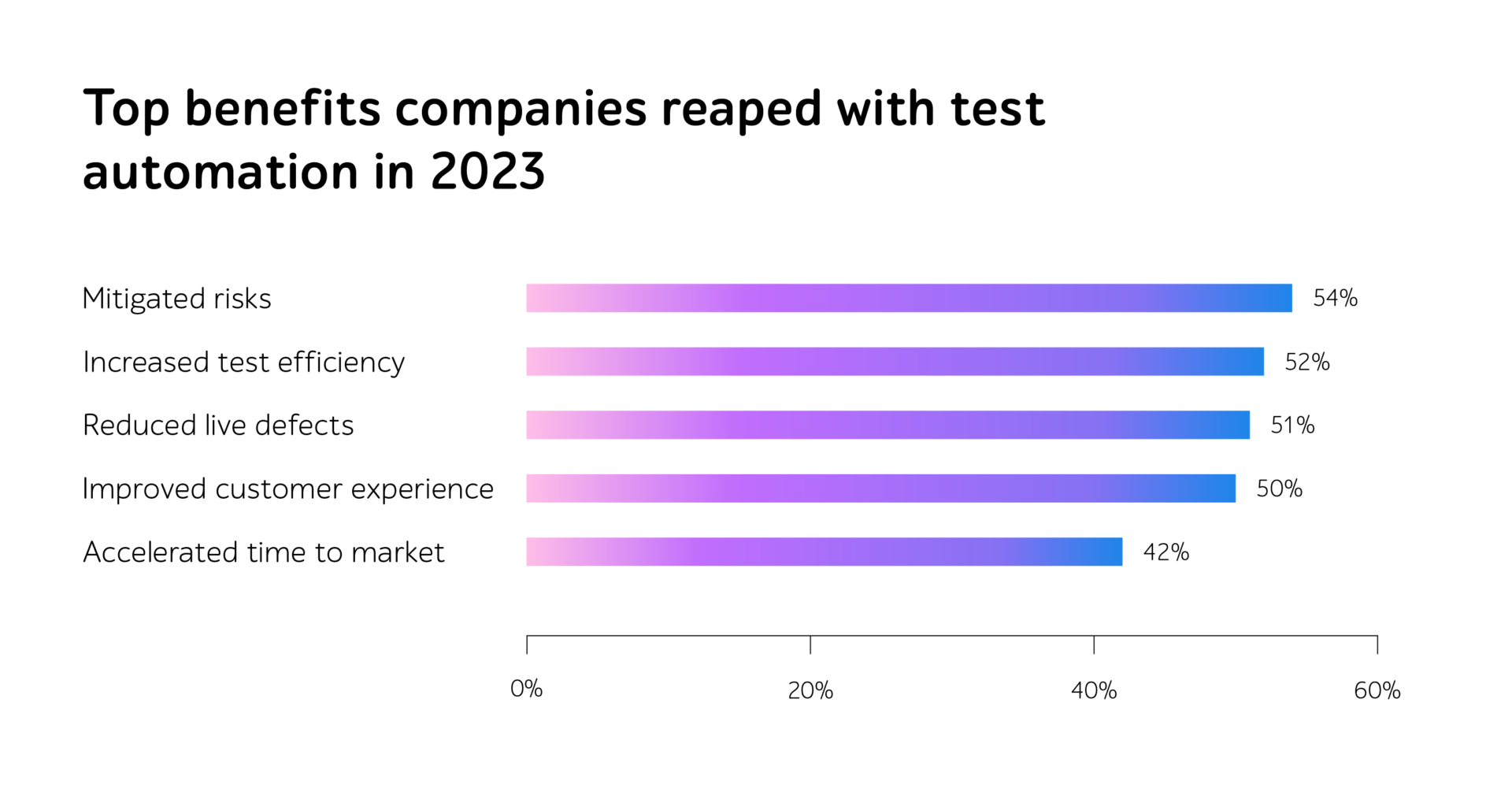
4 actionable tips to enhance Agile and DevOps processes
Only 52% of enterprises state that Agile works well across their organization. These statistics underscore a common challenge faced by businesses worldwide: the need to optimize Agile and DevOps processes to realize their full potential and strengthen their competitive advantage.
In response to this hurdle, we present four actionable tips, allowing companies to streamline Agile and DevOps practices, drive greater efficiency, and attain desired outcomes.
Understanding Agile and DevOps
Agile methodology emphasizes smaller, more manageable sprints to allow businesses to swiftly adapt to changing requirements and accelerate the delivery of high-quality IT products aligned with customers’ expectations. The iterative nature of Agile also enables organizations to rapidly course-correct, reducing the risk of failures and increasing the overall transparency of the project.
DevOps, in its turn, encompasses the entire software delivery lifecycle. By integrating development, operations, and QA teams, DevOps helps companies release new software features and updates more frequently.
Unleashing value: benefits to reap with Agile and DevOps
Embracing Agile and DevOps methodologies goes beyond mere process optimization. They help companies unlock a multitude of other benefits. Let’s look at them!
- Hastened velocity
By streamlining development processes and automating time-consuming and repetitive tests, Agile and DevOps assist businesses in reducing the release time. This accelerated pace helps organizations to stay ahead of competitors and expand market share.
- Increased software quality
By integrating rigorous QA practices and test automation into the development process, Agile and DevOps help ensure that the IT solution undergoes comprehensive evaluation at every stage of development. Thus, companies detect and eliminate defects early in the SDLC while launching a product of higher quality and greater reliability. Ultimately, this fosters customer loyalty and enhances user satisfaction.
- Optimized budgets
Agile and DevOps contribute to cost reduction by minimizing expensive rework after going live. This results in improved efficiency, lower overheads, and higher ROI throughout the software delivery lifecycle.
- Enhanced cooperation
Agile and DevOps methodologies promote a culture of open communication, breaking down silos between teams and fostering a sense of shared responsibility. This collaborative environment encourages knowledge sharing, facilitates alignment on project goals, and empowers experts to work towards common objectives.
Optimizing Agile and DevOps processes: 4 tips to follow
In this chapter, we suggest four actionable tips designed to streamline workflows and drive continuous improvement in Agile and DevOps practices.
Tip #1. Rely on test automation
Faster delivery, higher-quality software, reduced test cycle time, and increased efficiency – all achieved with test automation. In addition, according to the World Quality Report 2023-24, automation helped businesses mitigate risks (54%), reduce life defects (51%), and improve customer experience (50%).

Source: The World Quality Report 2023-24
Test automation serves as a linchpin of Agile and DevOps, enabling teams to eliminate manual efforts and time-consuming tasks while focusing on core activities. Applied within flexible methodologies, it allows companies to detect defects early in the SDLC, conduct continuous app updates, expedite feedback loops, and deliver software increments more rapidly.
Tip #2. Choose the appropriate toolset
To attain the desired outcomes in the Agile and DevOps environments, organizations should choose the right test automation toolkit. To do this, it’s essential to evaluate several factors, including:
- Compatibility — to ensure that the tools are aligned with the technologies and frameworks used in your software development ecosystem and offer seamless integration with CI/CD pipelines, version control systems, and bug tracking platforms.
- Ease of use — to minimize the learning curve for team members and facilitate the toolset adoption.
- Feature set — to guarantee it meets your specific testing requirements, including support for various testing types be it functional, performance, or security QA.
- Costs — to assess licensing fees, maintenance expenditure, and any additional expenses associated with training, support, and infrastructure requirements.
Tip #3. Invest in training and skill development
Allocate resources towards training programs to empower team members with the knowledge and expertise needed to excel in Agile and DevOps environments. By providing access to comprehensive workshops and certification programs tailored to Agile and DevOps practices, companies foster a culture of continuous learning and cultivate a highly skilled workforce.
The experts, in turn, are better equipped to deliver high-quality results in less time and respond more effectively to changing market dynamics, providing the organization with a competitive edge.
Tip #4. Adopt a DevSecOps approach
By treating security as a core component of the development process rather than an afterthought, businesses strengthen their overall safety level, enhance resilience against cyber threats, and protect sensitive data. To identify and mitigate vulnerabilities before they leak in production environments, businesses should integrate security into all phases, from design and development to testing, deployment, and operations.
Conversely, neglecting security measures can expose companies to data leaks and other issues. This can lead to severe consequences, including legal liabilities, financial penalties, and loss of customer trust, which can have far-reaching implications for long-term viability. Therefore, leveraging a DevSecOps approach is imperative to protect their assets, maintain regulatory compliance, and maintain a positive reputation.
To sum up
To release high-end software products at speed and excel in today’s competitive IT landscape, businesses should streamline their Agile and DevOps processes.
For that, they can rely on test automation, choose the appropriate toolset, invest in training and skill development, and adopt a DevSecOps approach.
If you need support in improving your Agile and DevOps workflows, reach out to a1qa’s team.









